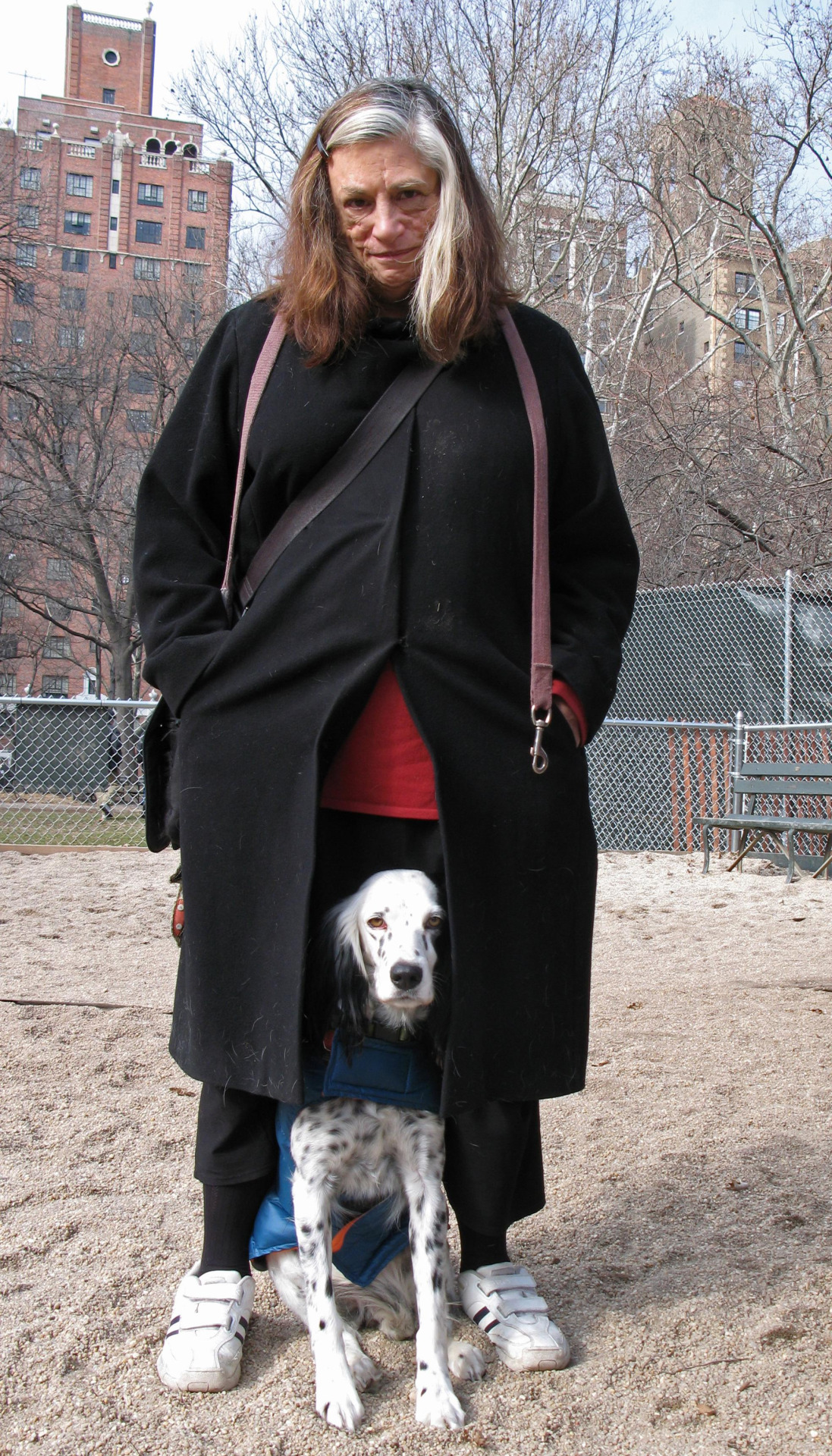
Bio courtesy of Electronic Arts Intermix:
Dara Birnbaum’s provocative video works are among the most influential and innovative contributions to the contemporary discourse on art and television. In her videotapes and multi-media installations, Birnbaum applies both low-end and high-end video technology to subvert, critique or deconstruct the power of mass media images and gestures to define mythologies of culture, history and memory. Through a dynamic televisual language of images, music and text, she exposes the media’s embedded ideological meanings and posits video as a means of giving voice to the individual.
Birnbaum has stated that she wanted to “define the language of video art in relation to the institution of television.” In her radical media critiques of the late 1970s, including the seminal Technology/Transformation: Wonder Woman (1978-79), she used rigorous tactics of deconstruction and appropriation to dismantle television’s codes of representation. Among the first artists to apply these strategies to subvert the language of television texts, she turned its vocabulary back on itself in a powerful critique.
Analyzing TV’s idiomatic grammar (reverse shot, cross-cut, inserts) and genres (game shows, sitcoms, crime dramas), she recontextualized pop cultural icons — Kojak, General Hospital — through fragmentation and repetition. She writes: “By dislocating the visuals and altering the syntax, these images were cut from the narrative flow and countered with musical texts, plunging the viewer headlong into the very experience of TV — unveiling TV’s stereotypical gestures of power and submission, of self-presentation and concealment, of male and female egos.” These ground-breaking works often focus on the representation of women.
In the mid-1980s, Birnbaum began exploring the metaphorical and expressive potential of video technologies. In the Damnation of Faust trilogy, she rearticulates the Romantic Faustian myth through a female voice, as a catalyst for introspections into the conflict between inner and external worlds, loss and memory. Drawing on her background in architecture and painting, she invents new pictorial devices to extend her evocative narrative content. Actual and psychological reality, past and present are conjoined through visual motifs such as reframed and layered images, dramatic wipes, and box inserts that function as windows onto other realities. In Canon (1990), she merges low-end and high-end technology to explore how the individual’s voice can be heard in a technocratic society.
Birnbaum has received international recognition for her installation works, from the widely exhibited PM Magazine (1982-89), a powerful deconstruction of television’s visual economy of sexuality and consumerism, to Tiananmen Square: Break-In Transmission (1990), an examination of the role of the media in the Chinese student uprisings.
Exploring how technology and media function in culture through a collusion of art and television, Birnbaum has produced works for contexts ranging from public sites to MTV. In 1989, she completed the Rio Videowall, a permanent large-scale outdoor video installation, a twenty-five-monitor interactive wall at Rio Shopping/Entertainment Complex in Atlanta, Georgia.
Birnbaum was presented with the American Film Institute’s Maya Deren Award for Independent Film and Video in 1987. She also received the Louis XIII de Remy Martin Award of Excellence in 1987, and was appointed Visiting Junior Fellow of the Council of the Humanities and Perkins Junior Fellow in the Program in Visual Arts at Princeton University. In the same year, she produced an Artbreak for MTV Networks, Inc., and Rough Edits: Popular Image Video, a book on her early videoworks, was released.
Dara Birnbaum received a Bachelor of Architecture degree from Carnegie Mellon University and a B.F.A. in painting from the San Francisco Art Institute. She received Harvard University’s Certificate in Recognition of Service and Contribution to the Arts as Visiting Artist 1987-88, and a Louis B. Mayer Artist-in-Residency at Dartmouth College in 1983. She has received numerous grants and awards for her work in video, from institutions including the National Endowment for the Arts; the New York State Council on the Arts; and Creative Artists Public Service (CAPS); as well as contributing monies from The Contemporary Art Television (CAT) Fund; WNET/WGBH-TV; and Art Matters, Inc. In 2010 she was honored with a USA Francie Bishop Good and David Horvitz Fellow award from United States Artists Fellowship Program. In 2011 she was awarded a Creative Artist Residency at the Bellagio Center of the Rockefeller Foundation and a Pollock-Krasner Foundation grant.
International solo exhibitions of her work include The Museum of Modern Art, Whitney Museum of American Art, New York; the Jewish Museum, New York; Marian Goodman Gallery, New York; Flint Institute of Arts, Michigan; Wilkinson Gallery, London; IVAM Centre Julio Gonzalez, Valencia; and the Musee d’Art Contemporain, Montreal. Retrospective screenings include The American Film Institute, Los Angeles; Kunsthaus, Zurich; and Kunstmuseum, Berne, Switzerland. Birnbaum was the only video artist invited to participate in Documenta 7, Kassel, Germany; the 1985 Carnegie International, Pittsburgh; and the 74th American Exhibition, Chicago, where she was awarded the Norman Wait Harris Prize.
In 2009 Birnbaum was honored with a major retrospective of her work, entitled The Dark Matter of Media Light, at S.M.A.K. (Stedelijk Museum voor Actuele Kunst) in Ghent, Belgium. The exhibition traveled to the Museu Serralves in Porto, Portugal, in 2010. A major catalogue of the same name was published in 2011.
Birnbaum’s international group exhibitions include Moderna Museet, Stockholm; Stedelijk Museum, Amsterdam; The Tate Gallery, London; Centre Georges Pompidou, Paris; Hirshhorn Museum and Sculpture Garden, Washington D.C.; The Institute of Contemporary Art, Boston; The New Museum of Contemporary Art, New York; Museum of Contemporary Art, Los Angeles; J. Paul Getty Museum, Los Angeles; Wexner Center for the Arts, Columbus, OH; Centre Audiovisuel Simone de Beauvoir, Paris; Neuer Berliner Kunstverein, Berlin; and DuMont Kunsthalle, Cologne. She has taught at the Nova Scotia College of Art and Design, Halifax; California Institute of the Arts, Valencia; Princeton University; and the School of Visual Arts, New York.
Birnbaum lives and works in New York.
